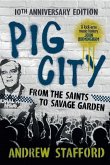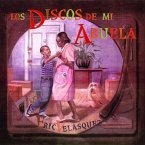Spanish Harlems musical development thrived between the 1930s and 1980s in New York City. This area was called El Barrio by its inhabitants and Spanish Harlem by all others. It was a neighborhood where musicians from the Caribbean or their descendants organized musical groups, thereby adding to the diaspora that began in Africa and Spain. The music now called salsa had its roots in Cuba, Puerto Rico, and Santo Domingo, and it continued developing on another island: Manhattan.
Hinweis: Dieser Artikel kann nur an eine deutsche Lieferadresse ausgeliefert werden.
Hinweis: Dieser Artikel kann nur an eine deutsche Lieferadresse ausgeliefert werden.







